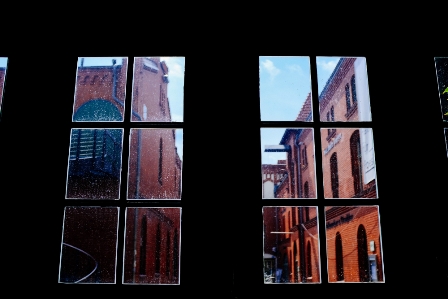When it comes to window tinting, there’s a fine line between enhancing your privacy and breaking the law. Florida, like many other states, has specific regulations regarding window tint darkness. In this article, we will explore the darkest legal tint in Florida and the rules that govern it.
Understanding Window Tinting Laws in Florida
Legal Tint Percentage
Florida law allows vehicle owners to have their windows tinted as long as they meet certain standards. The legal tint percentage, often referred to as Visible Light Transmission (VLT), varies for different windows on a vehicle. The VLT refers to the amount of visible light that can pass through the window.
Tint Darkness on Different Windows
- Front Side Windows:
Florida law mandates that front side windows must allow more than 28% Visible Light Transmission (VLT). This means that no less than 28% of visible light should be able to pass through these windows.
- Rear Side Windows:
Florida regulations are more lenient when it comes to rear side windows. The law permits any level of tint darkness for rear side windows. This provides vehicle owners with greater flexibility in choosing the darkness of their rear side window tint.
- Rear Window:
Similar to rear side windows, the rear window is also not subject to specific tint darkness limits in Florida. Vehicle owners can opt for any level of tint darkness for the rear window, offering further choices for privacy and UV protection.

Why Tint Your Windows?
Before we delve into the legal aspects of window tinting, it’s crucial to understand the practical reasons why people choose to tint their vehicle’s windows:
Privacy:
Tinted windows provide an increased level of privacy. They act as a barrier, preventing prying eyes from peering into your vehicle. This added privacy can be particularly beneficial, especially when you have valuable items in your car or if you simply prefer not to have your every move visible to the outside world.
UV Ray Protection:
Tinted windows are effective in blocking harmful ultraviolet (UV) rays from the sun. Prolonged exposure to UV rays can be detrimental to both your health and your car’s interior. Tinted windows act as a shield, reducing the penetration of these rays, safeguarding your skin and preventing sun damage to your car’s upholstery, dashboard, and other surfaces.
Heat Rejection:
In a place like Florida with its scorching summers, the interior of your vehicle can become unbearably hot. Tinted windows help in reducing the interior temperature by blocking a significant portion of the sun’s heat. This not only enhances your overall driving comfort but also reduces the need for excessive air conditioning, which can save on fuel and energy costs.
Choosing the Right Tint
When deciding to tint your vehicle’s windows, it’s essential to choose the right type of tint to suit your needs. Here are some key factors to consider:
Types of Window Tints
There are various types of window tints available in the market. These include:
- Dyed Tint:
Dyed tints are made by placing a layer of dyed film between an adhesive layer and the protective top coat. They are known for their ability to reduce glare and offer privacy. However, they are less effective at blocking heat and UV rays compared to other tints.
- Metalized Tint:
Metalized tints have tiny metallic particles embedded in the film. They are excellent at blocking heat and UV rays, offering superior sun protection. However, they can interfere with electronic signals in your vehicle, such as radio and GPS.
- Ceramic Tint:
Ceramic tints use non-metallic, ceramic particles that are both effective at blocking heat and UV rays and do not interfere with electronic signals. They tend to be more expensive but offer exceptional performance.
Each type of tint has its unique features and advantages, so it’s essential to choose one that aligns with your specific needs.
UV Ray Protection
Given Florida’s sunny climate, effective UV ray protection is a critical consideration. When selecting a window tint, opt for one that provides reliable UV ray protection. This feature not only protects your skin from harmful UV radiation but also safeguards your vehicle’s interior from fading and damage caused by prolonged sun exposure.
Heat Rejection
In Florida’s hot and humid weather, maintaining a comfortable interior temperature in your vehicle is essential. Look for tints that offer good heat rejection properties. These tints reduce the amount of heat entering your car, making it cooler and more pleasant to drive. This, in turn, can help lower your reliance on air conditioning, potentially saving on fuel and energy costs.
Privacy
The level of tint darkness can significantly impact your privacy inside the vehicle. Darker tints provide a higher degree of privacy, keeping the interior hidden from outside view. If privacy is a top priority for you, consider a darker tint for your rear side windows and rear window while ensuring compliance with legal regulations for front side windows.
Legal Tint Limits in Florida
Now, let’s get back to the legalities of window tint darkness in Florida.

Passenger Cars
For passenger cars, Florida law requires a VLT of at least 28% on the front side windows. This means that no less than 28% of visible light should pass through these windows.
Multi-Purpose Vehicles
Multi-purpose vehicles, including SUVs and vans, follow the same VLT requirements as passenger cars for front side windows. However, there are no specific limits for rear side windows and the rear window, allowing you to choose any tint darkness.
Medical Exemptions
Florida law does allow for medical exemptions regarding window tint darkness. If you have a medical condition that requires additional UV and light protection, consult your doctor and the Florida Department of Highway Safety and Motor Vehicles for the necessary documentation.
Penalties for Illegal Tint
Using window tint that does not comply with Florida’s legal regulations can result in several consequences. These penalties are designed to encourage compliance with the state’s tinting laws:
Fines:
The most common penalty for illegal window tint is fines. The specific amount of the fine can vary depending on the jurisdiction within Florida and the severity of the violation. Fines typically range from $100 to $500 or even more.
Tint Removal or Replacement:
In addition to fines, you may be required to remove or replace the non-compliant tint. This means that you’ll have to invest in the removal of the existing tint and purchase a new one that adheres to the legal requirements. This can result in additional costs and inconvenience.
How to Measure Tint Darkness
When it comes to measuring the darkness of window tint, there are specific methods employed to ensure compliance with Florida’s regulations:
Tint Meters
Law enforcement agencies use tint meters as a reliable tool to measure window tint darkness during traffic stops. These meters provide an objective and accurate reading of the Visible Light Transmission (VLT), which is a critical factor in determining whether the tint meets legal requirements. Tint meters work by gauging the amount of visible light that passes through the window. When a vehicle is pulled over for a tint check, an officer may use a tint meter to measure the VLT on each window, particularly the front side windows.
Visible Light Transmission (VLT)
Understanding the concept of Visible Light Transmission (VLT) is crucial when selecting window tint to ensure compliance with Florida law. VLT is expressed as a percentage and signifies the amount of visible light that can pass through the window. For example, if a window has a VLT of 28%, it allows 28% of visible light to pass through, and the remaining 72% is blocked. Florida law requires that front side windows maintain a VLT of at least 28%, ensuring a reasonable level of visibility for law enforcement officers and road safety.
Frequently Asked Questions about What is the Darkest Legal Tint in Florida
In Florida, the legal tint limit for front side windows is 28% VLT. Therefore, 20% tint would not meet the legal requirements for front side windows but is permissible for rear side windows and the rear window.
The darkest legal tint in Florida for front side windows is 28% VLT. There are no specific limits for rear side windows and the rear window, allowing for darker tints.
Yes, having 5% tint on your front side windows in Florida is below the legal limit of 28% VLT. Law enforcement may pull you over if your tint darkness does not comply with state regulations.
The fines for illegal window tint in Florida can vary depending on the jurisdiction and the circumstances. Generally, fines can range from $100 to $500 or more, and you may also be required to remove or replace the non-compliant tint.
No, 35% tint is generally legal in Florida for front side windows. It falls within the legal limit of 28% VLT for these windows. However, always ensure your tint complies with local regulations.
Yes, law enforcement in Florida can pull you over if they suspect that your window tint darkness does not meet the legal requirements. Using a tint meter, they can measure the VLT to determine compliance during a traffic stop.
Conclusion
Understanding the darkest legal tint in Florida is essential for vehicle owners. The state’s regulations on window tint darkness aim to balance the benefits of privacy and UV protection with road safety. By adhering to these rules, you can enjoy the advantages of window tinting without running afoul of the law.

